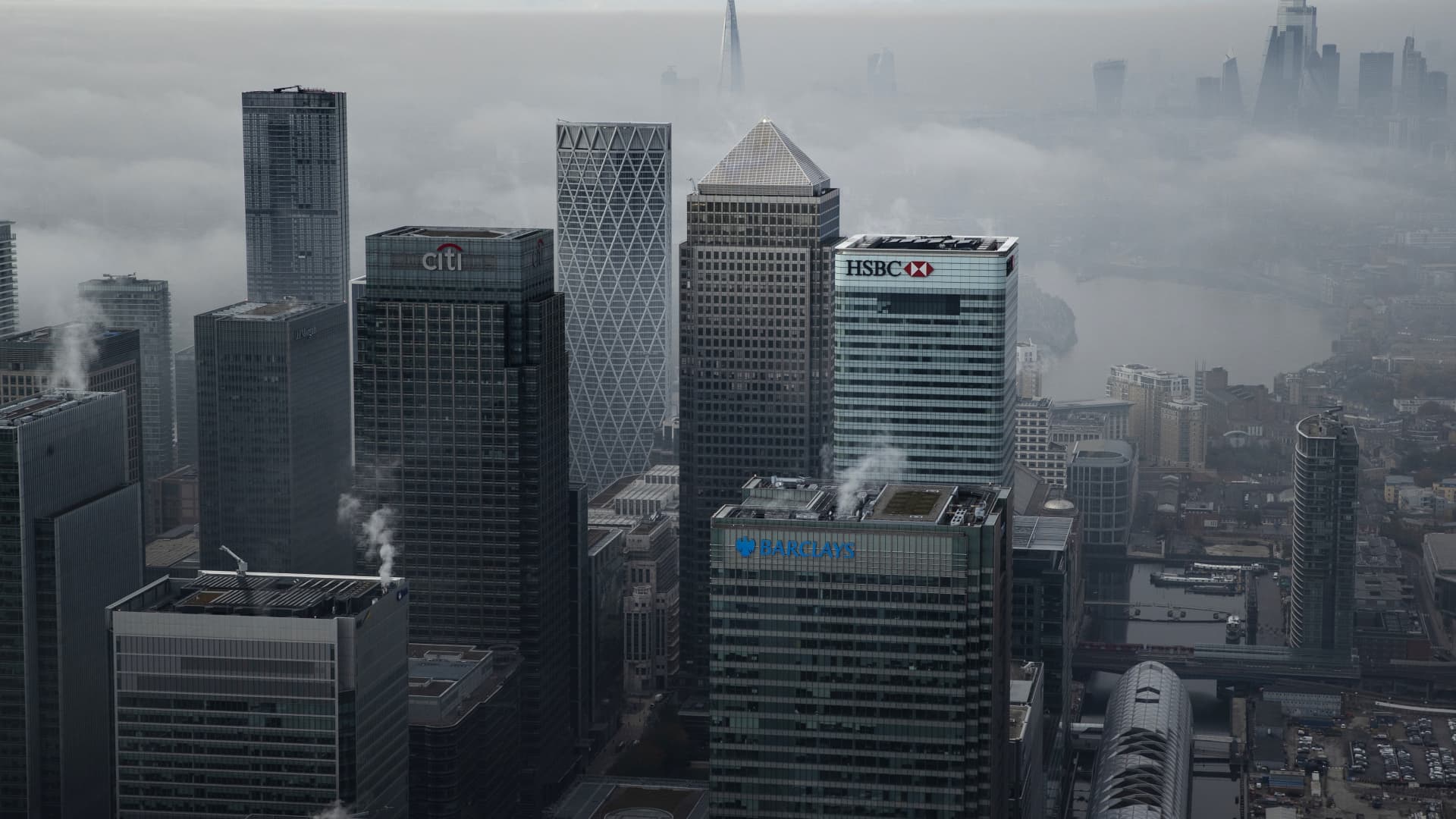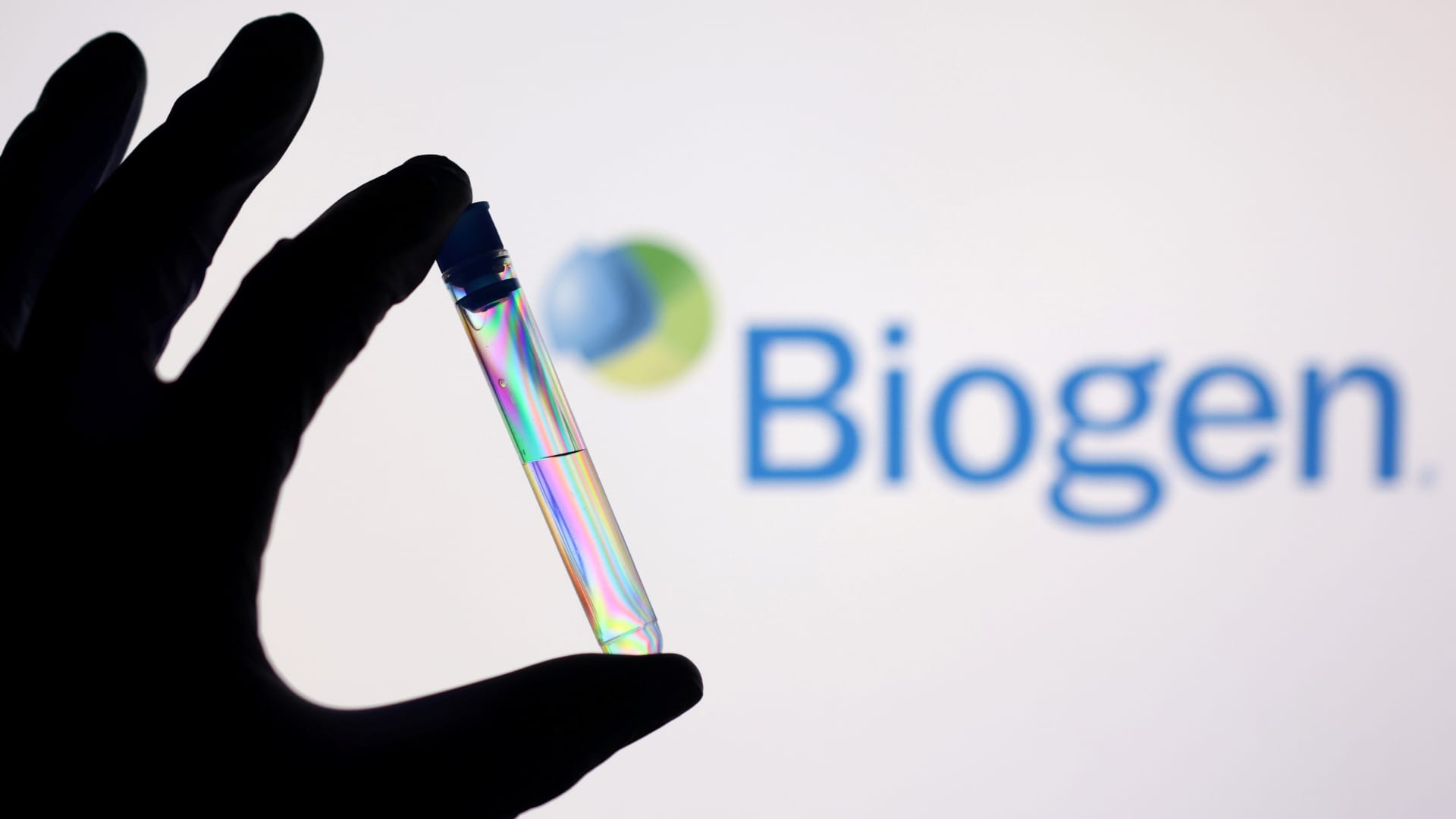LONDON – Nov. 5, 2020: Fog shrouds the Canary Wharf business district including global financial institutions Citigroup Inc., State Street Corp., Barclays Plc, HSBC Holdings Plc and the commercial office block No. 1 Canada Square.
Dan Kitwood | Getty Images News | Getty Images
LONDON — Barclays on Tuesday reported a fourth-quarter net loss of £111 million ($139.8 million) as the British lender announced an extensive strategic overhaul, boosting its shares more than 8.6% through the day.
Analysts polled by Reuters had expected net profit attributable to shareholders of £60.95 million for the quarter, according to LSEG data, as Barclays embarks on a major restructuring program in a bid to reverse declining profits.
For the full year, net attributable profit came to £4.27 billion, down from £5.023 billion in 2022 and below a consensus forecast of £4.59 billion.
The bank also announced an additional share buyback of £1 billion, and will set out a new three-year plan designed to further improve operational and financial performance, CEO C.S. Venkatakrishnan said in a statement.
Barclays took a £900 million hit in the fourth quarter from structural cost-cutting measures, which are expected to result in gross cost savings of around £500 million this year, with an expected payback period of less than two years.
Here are some other highlights:
- Fourth-quarter group revenue was £5.6 billion, down 3% from the same period last year.
- Credit impairment charges were £552 million, up from £498 million in the fourth quarter of 2022.
- Common equity tier one (CET1) capital ratio, a measure of bank’s financial strength was 13.8%, down from 14% the previous quarter.
- Full-year return on tangible equity (RoTE) was 10.6% excluding fourth-quarter restructuring costs. Fourth-quarter RoTE was 5.1%, down from 8.9% in the final quarter of 2022.
- Quarterly total operating expenses were roughly unchanged year-on-year at £4 billion.
Momentum in Barclays’ traditionally strong corporate and investment bank (CIB) — particularly in its fixed income, currency and commodities trading division — waned in 2023, as market volatility moderated.
On Tuesday, the bank announced a huge operational overhaul, including substantial cost cuts, asset sales and a reorganization of its business divisions, while promising to return £10 billion to shareholders between 2024 and 2026 through dividends and share buybacks.
The business will now be divided into five operating divisions, separating the corporate and investment bank to form: Barclays U.K., Barclays U.K. Corporate Bank, Barclays Private Bank and Wealth Management, Barclays Investment Bank and Barclays U.S. Consumer Bank.
“This resegmentation will provide an enhanced and more granular disclosure of the performance of each of these operating divisions, alongside more accountability from an operational and management standpoint,” the bank said in its report.
Barclays is targeting total gross cost savings of £2 billion and an RoTE of greater than 12% by 2026.
Ambitious targets
Mariva Rivas, vice president of global financial institution ratings at DBRS Morningstar, told CNBC that the strategic update of Tuesday may not be a “game changer,” but shows the continuity of the model already in place, with a few refinements.
“We consider the 2026 ROTE target of > 12% to be at the lower end of peers’ ROTE, although higher than the 9% in 2023 (10.6% excluding the cost restructuring impact)” she said via email.
“By business line, the ROTE target will be driven by strong although weaker than in 2023 ROTE on UK business, whilst improving ROTE materially in US cards and IB. In the U.S. card business, the 2026 ROTE improvement will be driven by higher operational efficiency and lower impairments, which would also depend on no changes to their macro economic assumptions.”
Barclays aims to reduce risk-weighted assets in the investment bank to around 50% from 58% in 2023, and to cut the IB cost: income ratio to the high 50s in percentage terms, from 69% last year.
“These targets seem quite ambitious in our view as IB usually requires constant investments in IT and the improvement is largely expected to be achieved through IB revenue growth of around GBP 1.8 billion by 2026, which seems quite optimistic considering that revenues have been quite flat since 2021, and the nature of IB revenues which tend to have certain volatility,” Rivas added.







